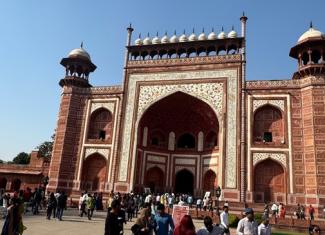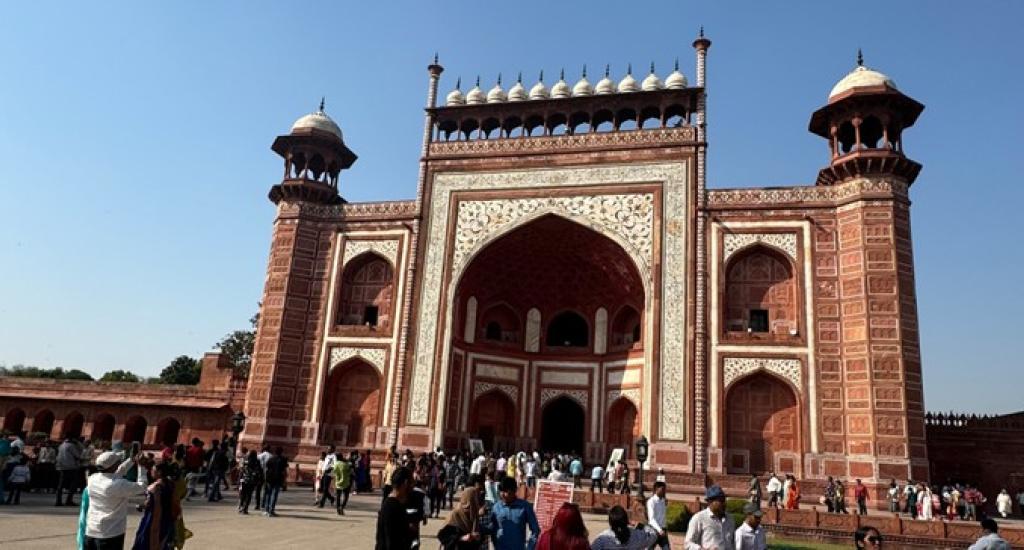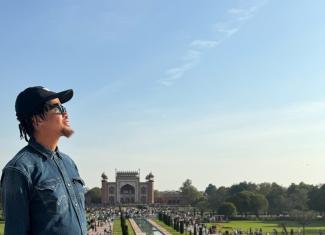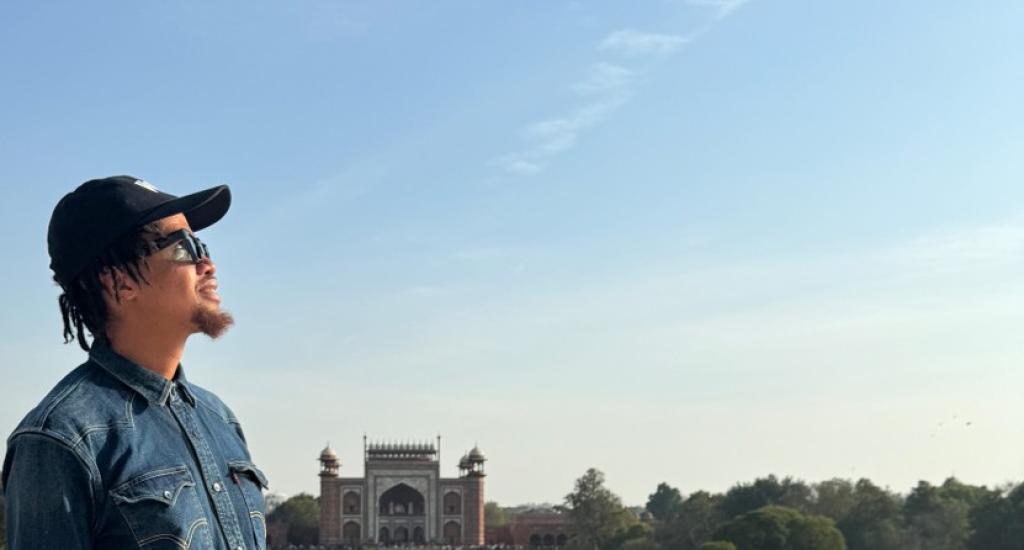Take me to Taj Mahal: India’s famous romantic landmark
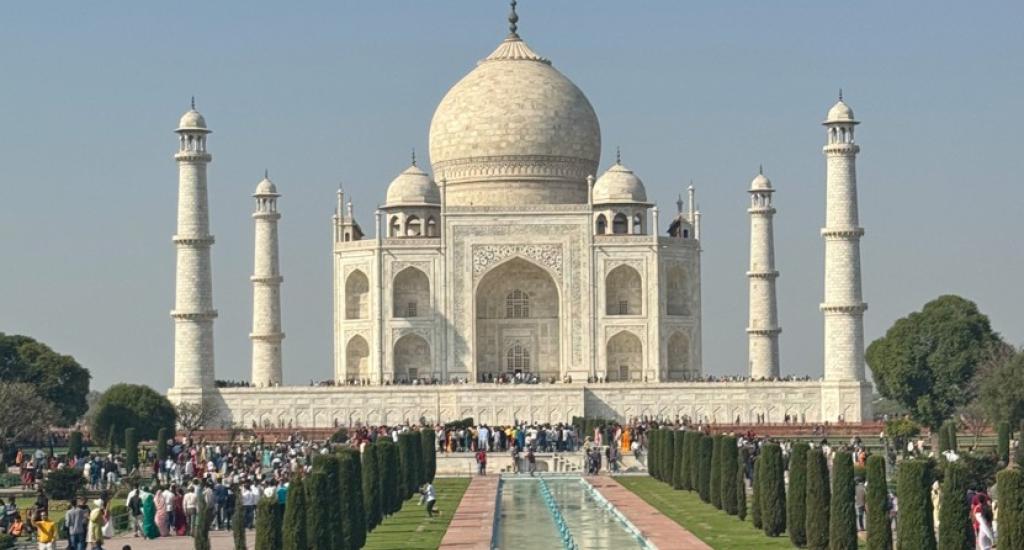
During my two-week stay in India in March 2024, my colleagues and I took a four-hour journey from New Delhi to the Taj Mahal in Agra – India's most famous and romantic landmark that draws tourists from all corners of the globe.
Many will tell you, “You cannot go to India and not go to the Taj Mahal”.
Upon arrival, we stepped off the bus and were whisked away on electronic golf carts from the parking lot to the entrance of the Taj Mahal.
At first, I was not too excited – there were just so many people queueing to get inside.
I was worried that the area would not be large enough to accommodate everyone waiting outside, not to mention those already inside. To my surprise, as we entered this, one of the Seven Wonders of the World, there was plenty of space for all of us. What a relief!
About five minutes into the place, we were assigned a tour guide – a kind spirited, gentleman, presumably in his 50s.
He explained the rules for our tour, reminding us to return to our meeting point in 45 minutes since we only had an hour to tour the precinct. My colleagues and I lost track of time as we were all mesmerised by the beautiful.
History
The tour guide shared a brief history of the Taj Mahal complex, which was was commissioned in 1632 by the Mughal emperor, Shah Jahan – who reigned from 1628 to 1658 – to house the tomb of his favourite wife, Mumtaz Mahal. He had two other wives. “ The Taj Mahal is a perfect symmetrical planned building, with an emphasis of bilateral symmetry along a central axis on which the main features are placed. The mosque and the guest house in the Taj Mahal complex are built of red sandstone in contrast to the marble tomb in the centre,” he explained.
He added that both buildings have a large platform over the terrace at their front, and both the mosque and the guest house are identical structures.
According to the Government of Uttar Pradesh in northern India, the tomb of Mumtaz Mahal is the centrepiece of a 17-hectare complex.
“The complex includes a mosque and a guest house and is set in formal gardens bounded on three sides by a crenelated wall. The construction of the mausoleum was essentially completed in 1643, but work continued on other phases of the project for another 10 years,” the government explained.
The estimated cost of the complex at the time was around 32 million rupees, and would translate to approximately 52.8 billion rupees (U.S. $827 million) in 2015.
The Taj Mahal was designated as a UNESCO World Heritage Site in 1983 for being “the jewel of Muslim art in India and one of the universally admired masterpieces of the world’s heritage”.
The Taj Mahal attracts seven to eight million visitors a year. In 2007, it was declared a winner of the New 7 Wonders of the World (2000 – 2007) initiative, according to the government.
Design
According to the UNESCO World Heritage Convention, the construction of the mausoleum includes the mosque, the guest house and the main gateway on the south, the outer courtyard and its cloisters.
“For its construction, masons, stone-cutters, inlayers, carvers, painters, calligraphers, dome builders and other artisans were requisitioned from the whole of the empire and also from Central Asia and Iran. Ustad-Ahmad Lahori was the main architect of the Taj Mahal,” stated the World Heritage Convention.
It added that the Taj Mahal is the greatest architectural achievement in the whole range of Indo-Islamic architecture. The World Heritage Convention regards the Taj Mahal's recognised architectonic beauty that has a rhythmic combination of solids and voids, concave and convex and light shadow such as arches and domes further increase the aesthetic appeal.
"The colour combination of lush green scape reddish pathway and blue sky over it showcases the monument in ever changing tints and moods. The relief work in marble and inlay with precious and semi-precious stones makes it a monument apart," it said.
It said the ground plan of the Taj Mahal is in perfect balance of composition, the octagonal tomb chamber in the centre, encompassed by the portal halls and the four corner rooms. it added that the plan is repeated on the upper floor, and the exterior of the tomb is square in plan, with chamfered corners.
“The large double storied domed chamber, which houses the cenotaphs of Mumtaz Mahal and Shah Jahan, is a perfect octagon in plan. The cenotaph of Mumtaz Mahal is in perfect centre of the tomb chamber, placed on a rectangular platform decorated with inlaid flower plant motifs. The cenotaph of Shah Jahan is greater than Mumtaz Mahal and installed more than thirty years later by the side of the latter on its west,” it said.
Next to the tomb, said the World Heritage Convention, is the main gate which stands majestically in the centre of the southern wall of the forecourt. "The gate is flanked on the north front by double arcade galleries. The garden in front of the galleries is subdivided into four quarters by two main walk-ways and each quarters in turn subdivided by the narrower cross-axial walkways, on the TimuridPersian scheme of the walled in garden. The enclosure walls on the east and west have a pavilion at the centre," it explained.
For more information, visit the UNESCO World Heritage Convention website, https:// whc.unesco.org/en/list/252/ and the Government of Uttar Pradesh on https://agra.nic.in/



